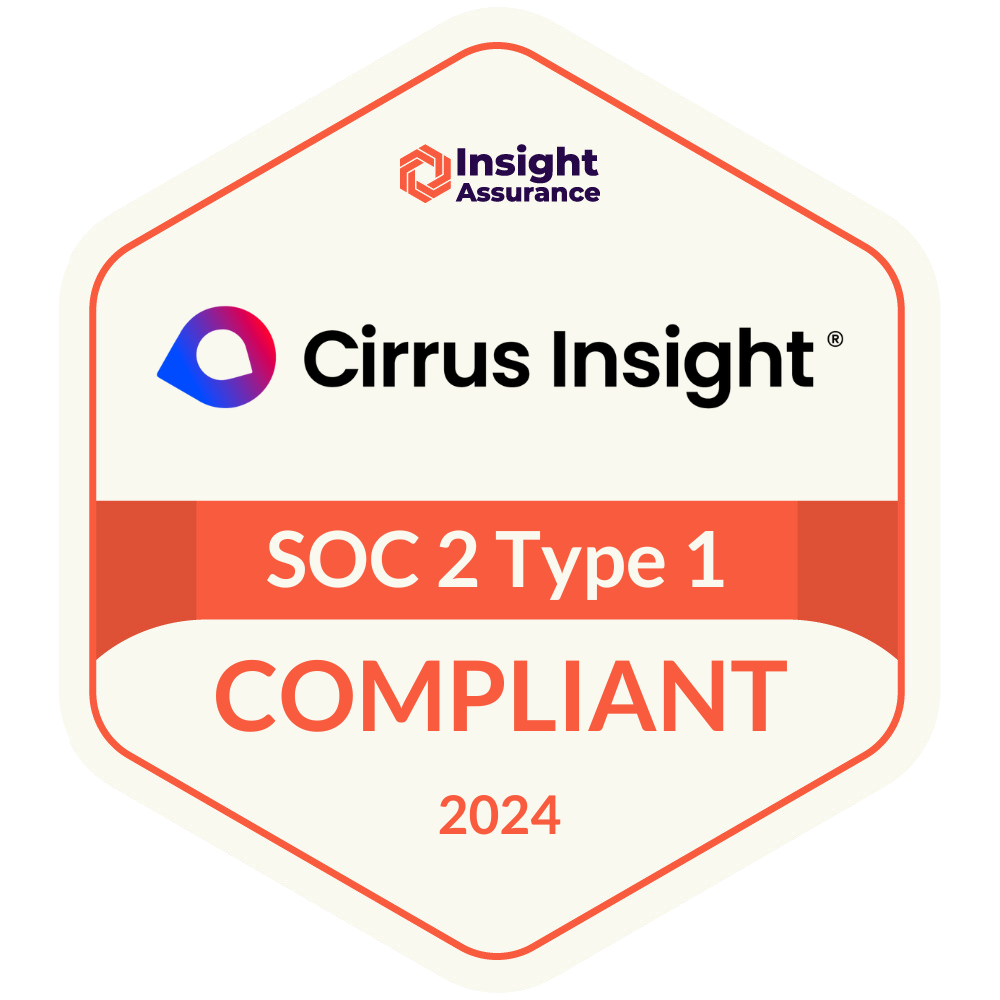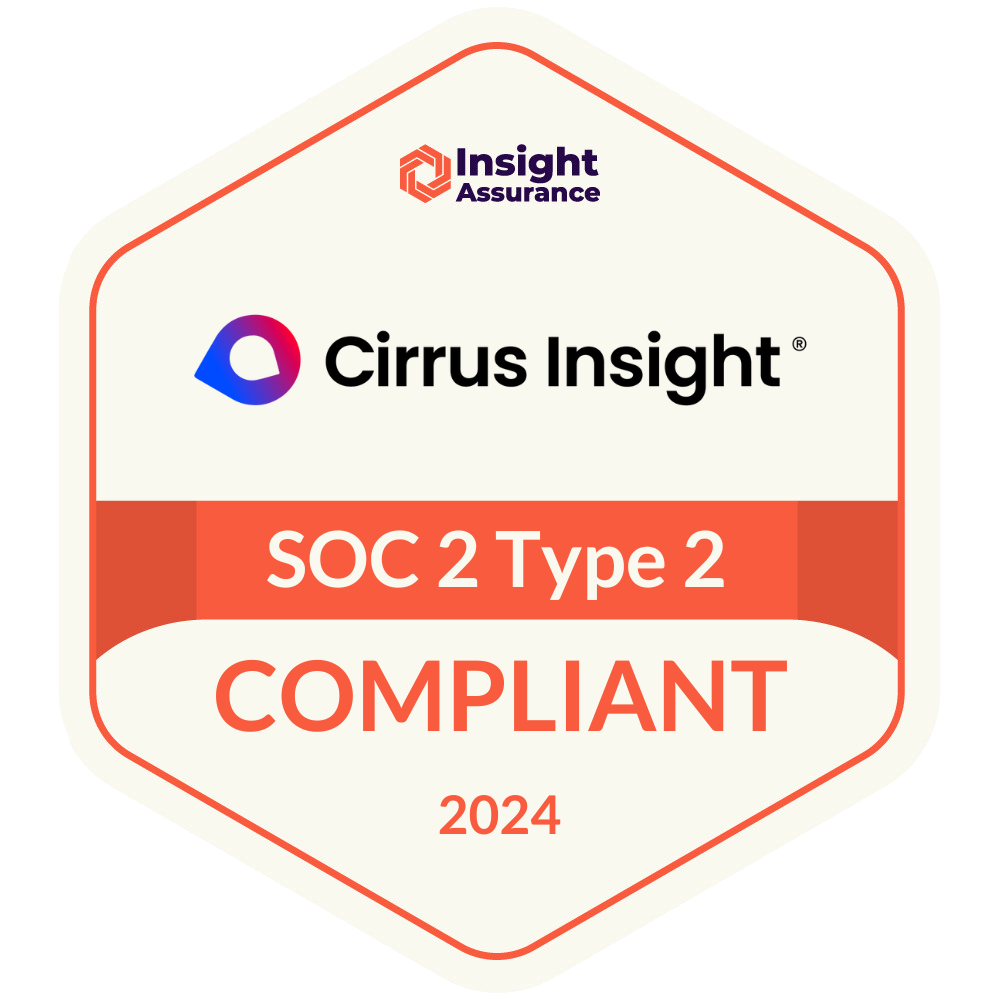- Solutions
-
Products
-
Resources
Sales Automation Tools | Cirrus Insight by Kristi Campbell View all Blog Posts >Get the App, Get the Sidebar, & Get Your Trial Going HereUnleash limitless growth opportunities by partnering with Cirrus Insight.
- Pricing
Understanding Buyer Signals and the Factors that Impact Them
Overview
The open rates and link click metrics of your emails are crucial for evaluating the performance of the emails you send to your customers. However, it's important to understand that multiple factors can influence the increase/decrease of the metrics you see in our Buyer Signals. This is something to keep in mind when using Buyer Signals to understand how customers are interacting with your emails.
Key Sections:
How Cirrus Insight Tracking Works
Email Tracking
At Cirrus Insight, our method of tracking email opens involves the use of a tracking pixel embedded in each email. Whenever this pixel is activated, our system is alerted and registers an open for that email. However, it's worth noting that the alert is triggered whenever the pixel is activated, not necessarily when the email is opened and read by the recipient.
Link Tracking
With link click tracking, our method of tracking involves “wrapping” the destination URL within a unique tracking URL. When users click on the wrapped link, their request first goes to our tracking server, which registers a “click” signal for the specific link you sent in your email. Then the user is redirected to the destination website.
By understanding how our Buyer Signal services work, it can help you interpret the data as it is generated. There are several scenarios that you should be aware of that can contribute to skewed Buyer Signal metrics. We go into detail on these scenarios below
Factors that Influence Buyer Signals
Open Rate Factors
Spam Filters
Spam filters have the ability to "open" the email as they scan them, both inbound and outbound.
Sent Folder Previews/Opens
If the sender reviews the message from their Sent folder, the tracking pixel in that email could be triggered, leading to an "open" event being recorded.
Reviewing Bounced Emails
When an email bounces back, and you open the message, the original email, including the tracking pixel, can sometimes be included. This could trigger an "open" event when viewed.
Apple's Mail Privacy Settings
If someone uses Apple Mail, this program has the ability to download outgoing messages to Apple's servers and opens the message from there. Consequently, an open notification can be triggered when the message is initially downloaded.
This feature is available on certain Apple devices and iOS versions.
Third-Party Apps or Browser Extensions
If these apps or extensions scan and open your outgoing messages for spam/analysis, every opened email is recorded as an open for that message.
Viewing an Email from the Preview Pane
Viewing the email by either hovering over the message that generates a preview or clicking the message causing it to display in a preview pane, can also be counted as an "open" since the pixel is displayed.
Email Providers Checking For New Spam Accounts
Email providers like Google and Microsoft occasionally limit the volume of emails that can be sent from new email accounts/addresses. This is to prevent spammers from taking advantage of their platform by opening new email accounts/addresses and immediately sending large volumes of messages (e.g., through automated email blasts). As a result, this could impact the open rates of your emails until those providers deem your account/address as safe.
Factors That Can Impact Both Open Rate and Link Click Metrics
Outgoing Email Scans
If your IT department has implemented procedures for outbound email scans, these activities could be construed as email opens. This is especially prevalent for emails with links or attachments since email security filters scan these parts of email messages.
Sometimes, the recipient’s email server may employ security software or network policies that "unwrap" URLs from email messages, effectively removing tracking elements. These security measures are designed to mitigate potential phishing or cybersecurity threats by analyzing the full, unwrapped URL before a user is directed there. This action prevents users from unknowingly navigating to malicious websites or downloading harmful content. As a result, link clicks in such environments may not be accurately tracked, as these measures effectively bypass the tracking service, leading to potential under-reporting of actual click rates.
Any Recipient Opening the Email
When anyone opens the email, whether they are in the To, CC, or BCC fields, an email "open" can be triggered if the tracking pixel is rendered. Conversely, if someone opens the email, but the tracking pixel is not rendered, an "open" signal will not be generated.
In addition, anyone with access to the email can click on/open the links and generate a "link click" signal.
Email Forwarding
If someone forwards your email to another person, each time the message is viewed could result in it being counted as an "open" if the tracking pixel is also forwarded. The same applies to the links clicked within that email. This could inflate open rate and link click numbers that are part of Buyer Signals.
Copy/Pasting Emails
If you copy a previously sent email and paste it into a new email or template, you may also be copying the tracking pixel. If that happens, an "open" will be recorded for the original message every time that new email is opened. The same goes for links that have been wrapped. To prevent this, avoid directly copying content from an already sent email and instead use the paste-as-plain-text function to remove the tracking pixel. In addition, you should generate new links for each email.
Limitations
Conversely, if you do not see any activity for a contact, it may be because of the following reasons:
- Prospect did not open the email , then score would be zero even for web visits.
- Prospects in multiple recipient emails opened/clicked/viewed it in different devices
- Prospect remains anonymous - They never were identified by Cirrus Insight. To be identified, a prospect has to be the only recipient of an email. Once prospect opens such an email, Cirrus Insight can track all their activity.
- Prospect is behind a fire wall or has disabled loading of images in their email client.
- Prospect forwards the email to someone else without opening it.
Conclusion
We use industry standards to provide you with insight into Buyer Signals. It's important to be aware that certain activities can generate false-positive opens and false-negatives, leading to skewed Buyer Signal metrics. Understanding these potential scenarios is crucial for interpreting Buyer Signal metrics accurately and effectively.
While open rates and link clicks are essential metrics, they are part of the overall puzzle. Ultimately, the success of your emails should be measured based on whether they achieve your overall objectives, such as driving engagement, generating leads, or closing sales. By considering the various factors that can influence Buyer Signal metrics, you can gain a clearer understanding of your customer engagement performance.





